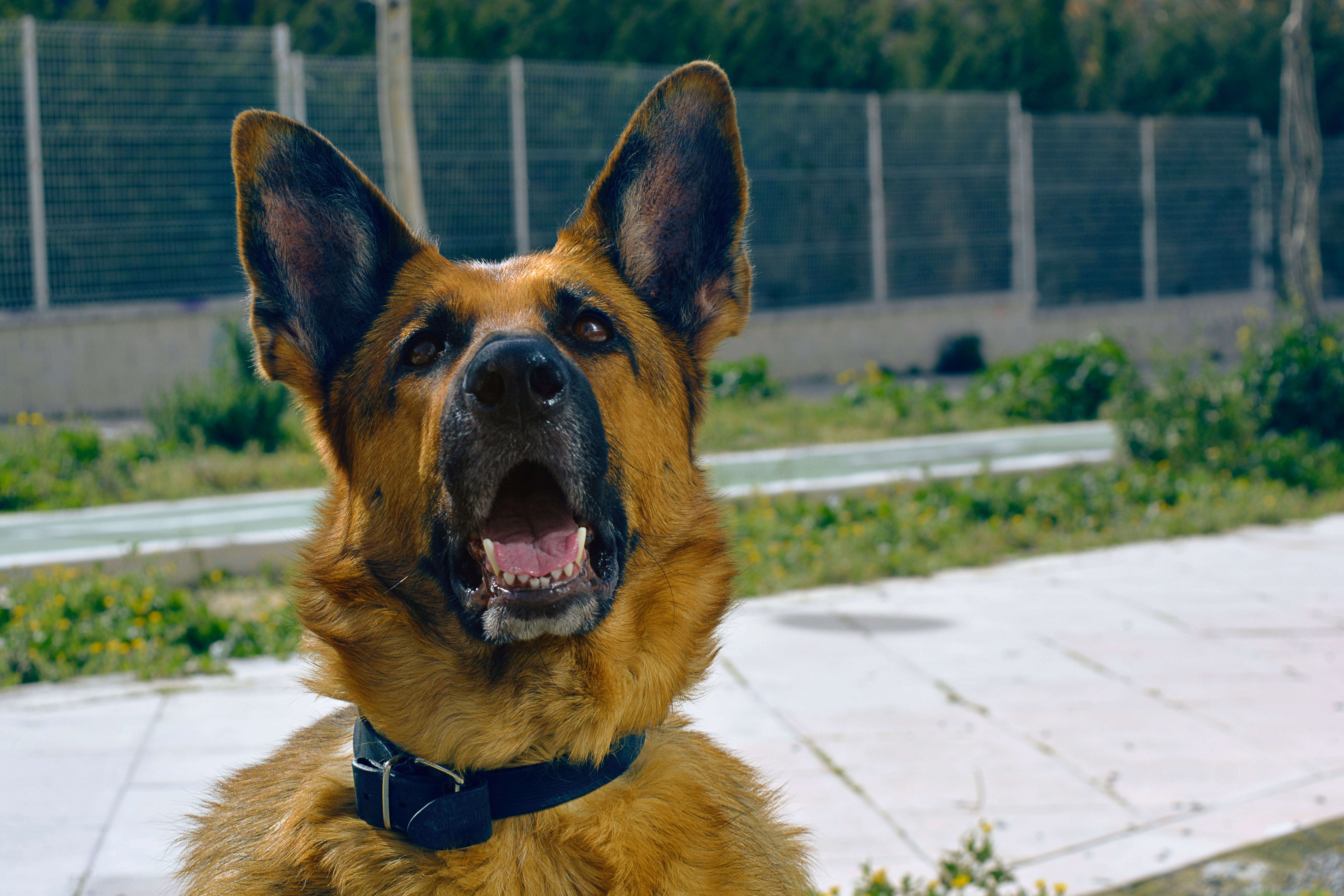Teaching the “Listen”
Don’t raise your voice to get his attention. Save the big booming voice for “life saving” situations, like if he escapes his fence or leash. If you rarely raise your voice, you’ll get your dog’s undivided attention when you do need to yell. But if you are always “loud” to your dog, they will ignore that sound and tune it out. Shouting will no longer be regarded as something that commands special attention.
- Dogs have excellent hearing — far better than ours. A fun twist on this command is to see how quietly you can whisper and have your dog respond. People will think you are the “dog whisperer” when you can get him to perform commands with hardly a whisper.
Give an immediate reward for the desired response. As soon as your dog stops what he’s doing and looks toward you, praise him and give him a treat. Make the click sound before giving praise or a treat if you’re using clicker training.
- Remember that your response must be immediate. The faster you reward him, the better he’ll understand the relationship between command, behavior, and reward.
Discontinue treats eventually. Once he’s mastered the command, you shouldn’t give him treats for performing it; however, you should still use your clicker or give verbal praise.
- Weaning the dog off treats is important because he may start to expect treats all the time. You’ll end up with a dog who only performs when you have food.
- Praise your dog regularly even after he’s mastered a command, but treat him intermittently. That’s the way to keep it solid in his doggy vocabulary.
- Once he’s mastered command, you can use treats to shape the behavior to be faster or more accurate. He will soon realize that the treats come with the command or activity that follows the “listen.”
Teaching the “Speak”
Understand the command. The “speak” command teaches your dog to bark in response to your verbal cue. On its own, this command is something of a novelty. But in combination with the “quiet” command, it can help manage a barking problem in an overly vocal dog.[11]
- Take extreme caution when teaching this command. Inexperienced trainers sometimes find “speak” training spirals out of control. They end up with a dog who barks at them all the time.
Clicker train your dog. “Speak” training requires immediate praise, more so than other commands do. Teach your dog to associate the click sound with a treat by clicking and treating a few times in a row.
- Continue this clicker training until your dog sees the click sound as a reward in and of itself. The treat will come later.
Recreate the triggering event. Once you’ve figured out what makes your dog bark, perform that action in front of your dog. The idea is to encourage him to bark on his own, then praise him for the action.
- You can see how this might be dangerous in the hands of an inexperienced trainer.
- That’s why “speak” training is a little different from the other commands. You’ll incorporate the verbal command from the very beginning. That way, the dog doesn’t think you’re praising him for his natural behavior.
Use the verbal “speak” command from the beginning. As soon as your dog barks for the very first time, give the verbal “speak” command, click, and give him a treat.
- The other commands thus far have taught the behavior first, then added a command that preceded the behavior.
- However, “speak” training gets out of hand too easily that way. The dog gets rewarded for barking at first.
- Thus, it’s better to associate the verbal command with the behavior already in progress. Never reward the dog for barking without the verbal command.
Combine the “speak” with the “quiet” command. If you have a dog who naturally barks too much, you might not think teaching him to “speak” is going to help your situation. However, if you teach him to “speak,” then you can also teach him to “quiet.” While you may not need the “speak” for a dog who barks too much, you definitely need the “quiet.”
- Once your dog has mastered the “speak,” begin incorporating “quiet” into your training sessions.
- Give the “speak” command.
- However, instead of rewarding the “speak” (barking), wait until the dog stops barking.
- Give the verbal “quiet” command.
- If the dog remains silent, reward the “quiet” (no barking) with a click and a treat.
Sources:
- http://www.aspca.org/pet-care/virtual-pet-behaviorist/dog-behavior/training-your-dog
- http://www.caninejournal.com/jack-russell-terrier-personality/
- http://www.pawnation.com/2014/03/13/low-energy-dog-breeds/3
- http://www.aspca.org/pet-care/virtual-pet-behaviorist/dog-behavior/teaching-your-dog-not-pull-leash
- http://www.aspca.org/pet-care/virtual-pet-behaviorist/dog-behavior/teaching-your-dog-come-when-called
- http://www.successdogs.com/dog-training-lessons/collar-grab-game/
- http://www.aspca.org/pet-care/virtual-pet-behaviorist/dog-behavior/training-your-dog
- https://www.cesarsway.com/dog-behavior/food-aggressive/food-aggression-and-what-to-do-about-it
- https://www.cesarsway.com/dog-behavior/food-aggressive/food-aggression-and-what-to-do-about-it
- https://positively.com/dog-behavior/basic-cues/leave-it/
- http://www.humanesociety.org/animals/dogs/tips/how_to_stop_barking.html
- http://www.humanesociety.org/animals/dogs/tips/crate_training.html
- http://www.aspca.org/pet-care/virtual-pet-behaviorist/finding-professional-help

